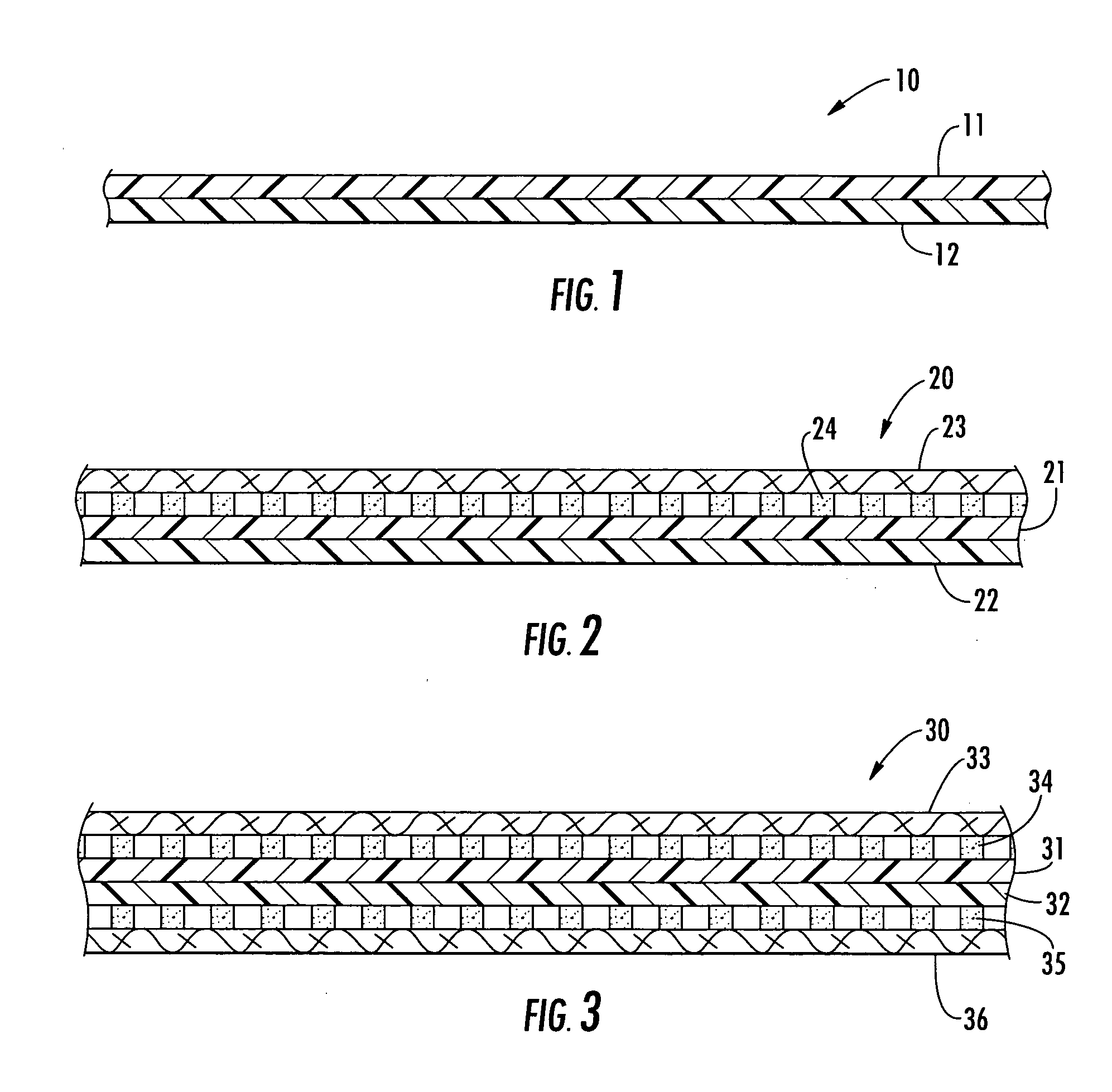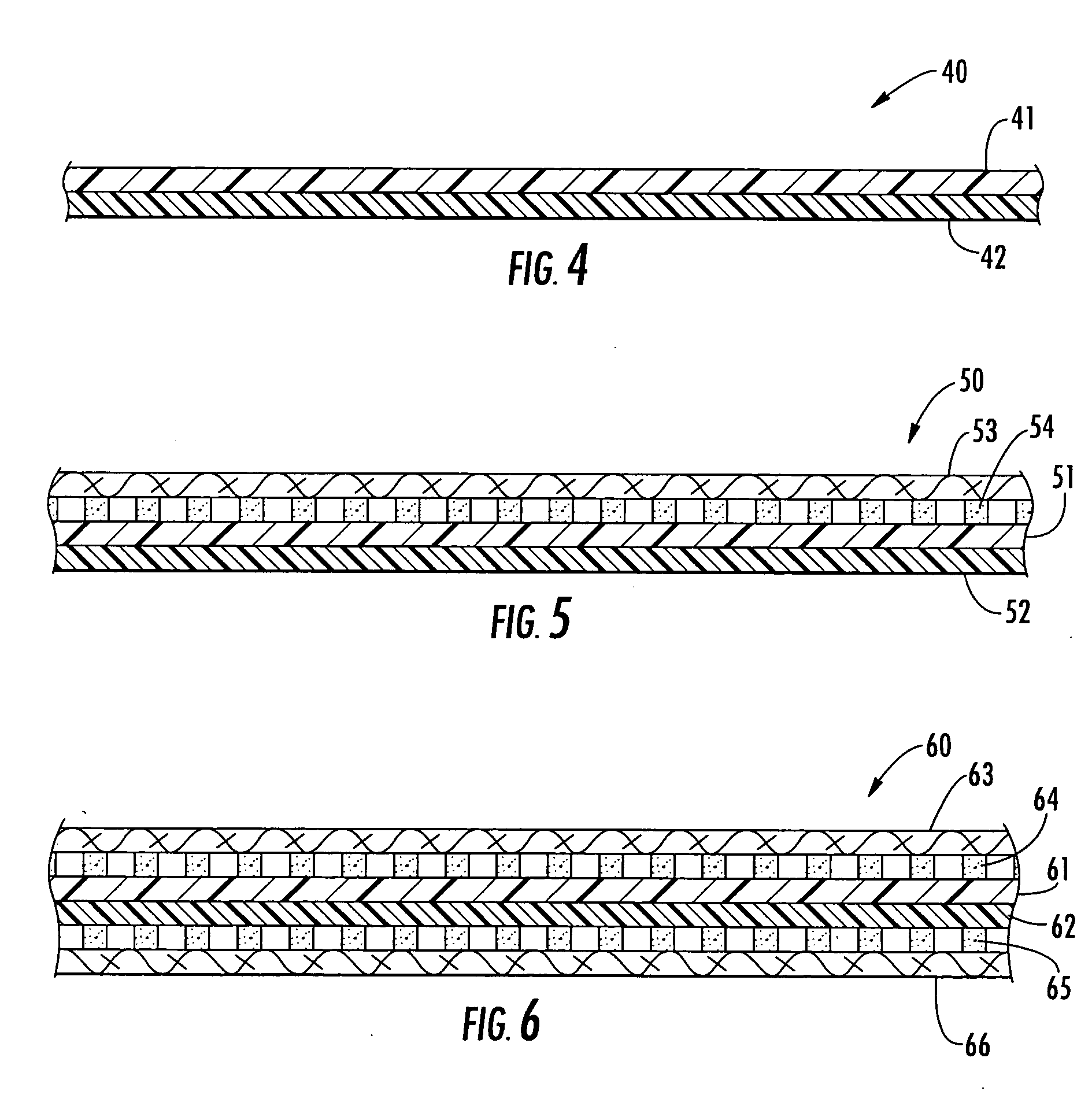Chemical-resistant breathable textile laminate
a textile fabric, chemical-resistant technology, applied in the field of breathable, waterproof textile laminates, can solve the problems of increasing user perspiration, precipitating hypothermia, and non-breathable textile fabrics are uncomfortable, and achieve the effect of adequate drape and softness, and high degree of breathability
- Summary
- Abstract
- Description
- Claims
- Application Information
AI Technical Summary
Benefits of technology
Problems solved by technology
Method used
Image
Examples
Embodiment Construction
[0026] The present invention now will be described more fully hereinafter with reference to the accompanying drawings, in which some, but not all embodiments of the invention are shown. Indeed, the present invention may be embodied in many different forms and should not be construed as limited to the embodiments set forth herein; rather, these embodiments are provided so that this disclosure will satisfy applicable legal requirements. Like numbers refer to like elements throughout.
[0027] As noted above, it had been previously believed that microporous membranes, such as e-PTFE, required coatings on the side nearest a user in order to protect the pores of the microporous films, as indicated in U.S. Pat. No. 4,194,041 to Gore et al. and U.S. Pat. No. 5,026,591 to Henn et al. However, the present inventors have determined that the performance of the microporous membrane layer does not significantly suffer in the absence of a coating on the side of the microporous membrane layer neares...
PUM
| Property | Measurement | Unit |
|---|---|---|
| Electrical resistance | aaaaa | aaaaa |
| Hydrophilicity | aaaaa | aaaaa |
| Hydrophobicity | aaaaa | aaaaa |
Abstract
Description
Claims
Application Information
 Login to View More
Login to View More - R&D
- Intellectual Property
- Life Sciences
- Materials
- Tech Scout
- Unparalleled Data Quality
- Higher Quality Content
- 60% Fewer Hallucinations
Browse by: Latest US Patents, China's latest patents, Technical Efficacy Thesaurus, Application Domain, Technology Topic, Popular Technical Reports.
© 2025 PatSnap. All rights reserved.Legal|Privacy policy|Modern Slavery Act Transparency Statement|Sitemap|About US| Contact US: help@patsnap.com



